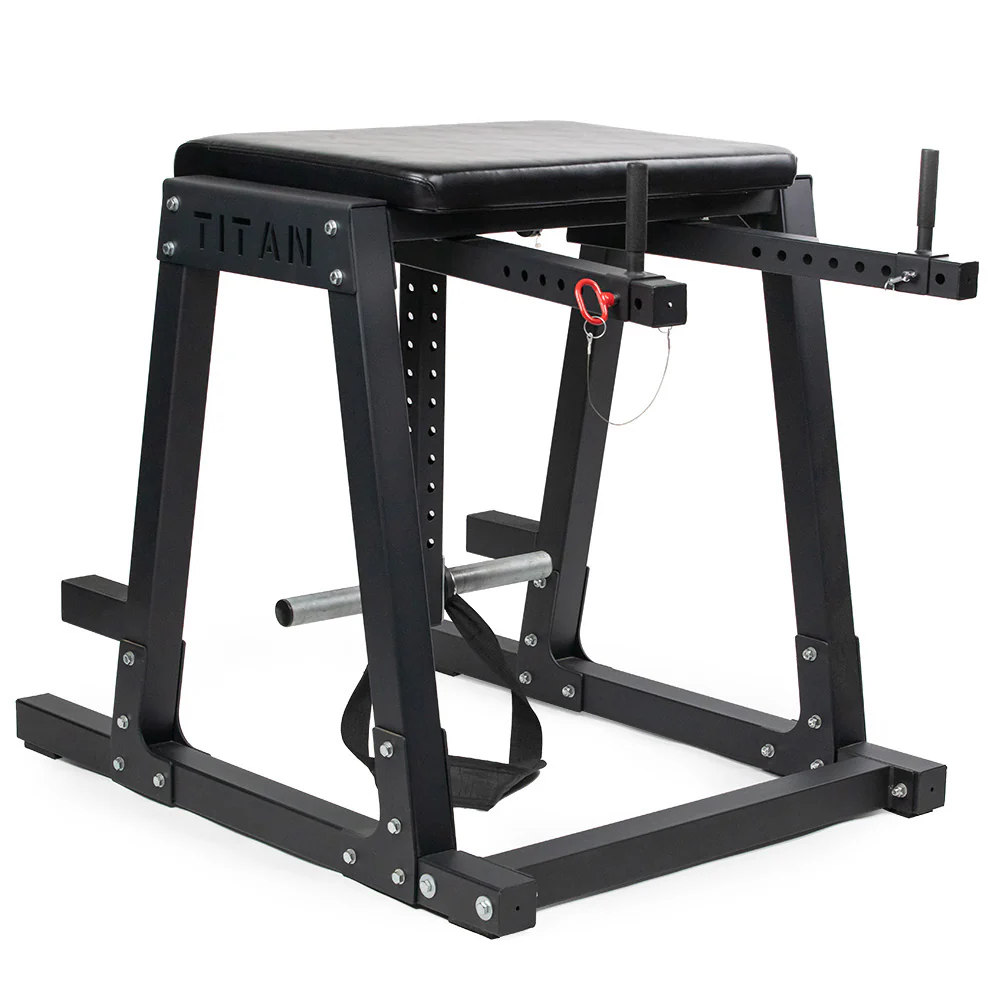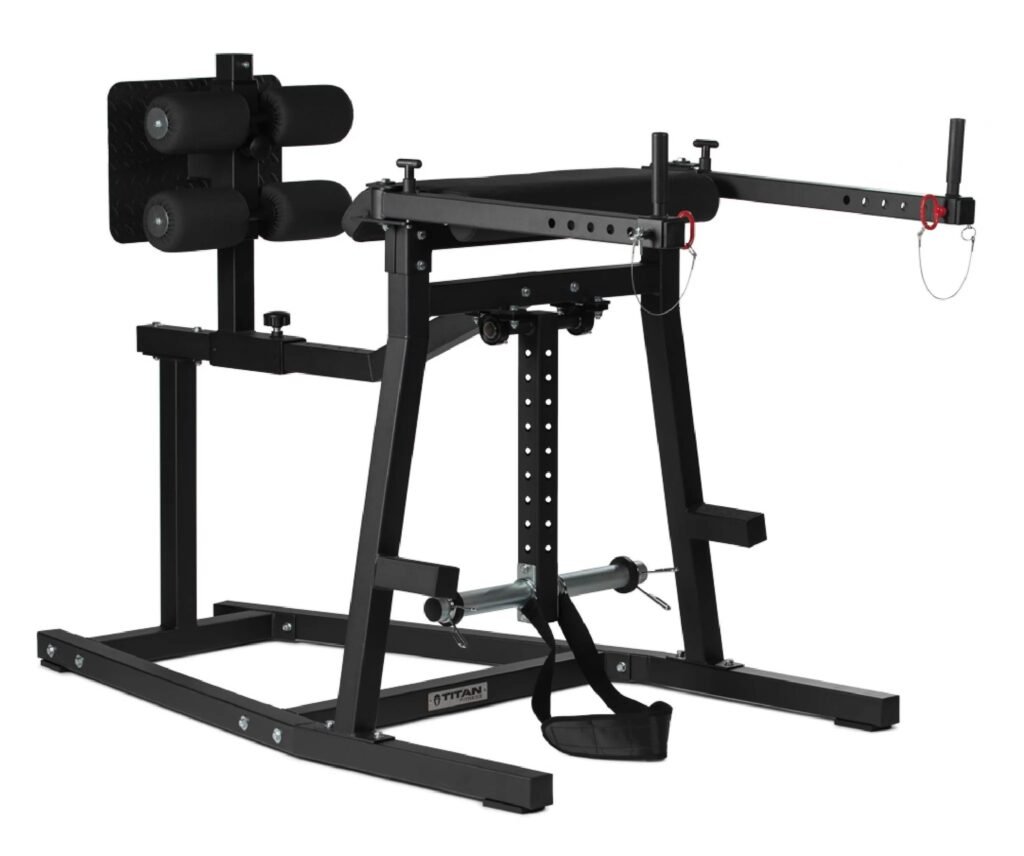How the reverse hyper machine kept me off a Cane
Back & Sciatica Pain Relief and Treatment
Hey, Ya’ll. If you’ve ever been knocked out by lower back pain or begged the universe for sciatica relief, you’re in good company. For the past 10 years, back and hip pain or stiffness has been my pesky shadow. As someone who’s always been very active, tackling Tough Mudder’s, Spartan Races, and half-marathons, I was stunned when lower back and hip pain hit me like a freight train in my mid-30s, bringing sciatica relief struggles so intense I was genuinely thinking about acquiring a cane. But then I discovered the reverse hyper machine, and let me tell you, it’s been a lifesaver for lower back pain relief, hip and lower back stiffness, and even my quest to increase sprinting speed. Here’s my story, packed with science, real talk, and tips to help you decide if this machine is your ticket to a stronger, pain-free you.
My Journey with Sciatica & Back Pain
Imagine me in my mid-30s, feeling fit, crushing obstacle races and half-marathons. Then, I made “The” mistake… I ran a half-marathon with barely any prep, and it flipped my world. My hips and glutes tightened up, pinching my sciatic nerve, and suddenly lower back pain with severe sciatica, that I wouldn’t wish on my worst enemy. The pain was so bad I could hardly walk, let alone run. I threw everything at it: stretching, foam rolling, lacrosse balls, weightlifting, you name it. These gave me a sliver of lower back pain relief, but the sciatica relief I craved was like chasing a mirage. The pain kept boomeranging back, no matter what I tried.
Then I stumbled across an article raving about the reverse hyper machine. People swore it strengthened and stretched back muscles, offering lower back pain exercises that could tame hip and lower back stiffness and deliver sciatica relief. As someone desperate to ditch the pain, I was all in. I ordered a reverse hyper that day, and when it arrived, I was like a kid unwrapping a shiny new toy. My first session? Yikes! My lower back felt stretched in ways it hadn’t in ages, and my muscles were wiped out. I worried I was making things worse, so I kept the weight light and spaced out my workouts. But after two weeks, I felt a shift. By three weeks, the sciatica relief was real, the crippling pain was gone! Some nerve irritation hung around, but it was night-and-day better. Now, years later, I use the reverse hyper regularly, stretch my quads, and haven’t had sciatica since. It’s been a game-changer for lower back pain relief and keeping hip and lower back stiffness under control.
Let’s dig into why the reverse hyper is so awesome, how it prevents injuries, helps with sciatica relief, and might even increase sprinting speed.
What’s a Reverse Hyper Machine?
The reverse hyper is a gym machine designed for lower back pain exercises that target the muscles along the back of your body, called the posterior chain. You lie face-down on a padded platform, hips at the edge, with your legs strapped to a swinging arm. You lift your legs up and down against resistance, like a smooth pendulum. It’s super low impact, so it’s gentle on your spine. Powerlifter Louie Simmons invented it to heal his own back injuries, and now it’s a go-to for many from teens to pro athletes.
Why the reverse hyper is a Cut Above
Unlike heavy lifts like deadlifts that can stress your spine, the reverse hyper strengthens your glutes, hamstrings, and lower back while giving your spine a gentle stretch. This makes it a superstar for lower back pain relief, injury prevention, and boosting performance like increasing sprinting speed. It’s like a magic wand for your back, blending strength and relief in one smooth move.
How Does the Reverse Hyper Prevent Injuries
One of the coolest things about the reverse hyper is how it keeps injuries at bay. As someone who’s pushed my body hard, I’ve learned that lower back pain often comes from weak muscles or overdoing it. Here’s how the reverse hyper helps:
- Stronger Muscles, Stronger You: The reverse hyper powers up your glutes, hamstrings, and lower back muscles, which act like a shield for your spine and hips. Weak muscles are a major lower back pain cause, especially for active folks like me who run or lift. A 2019 study in the Journal of Strength and Conditioning Research found that reverse hypers fire up these muscles big time, making them tougher and less likely to strain during sports or daily tasks. Powerlifters on Reddit’s r/homegym say their backs feel “bulletproof” after using it, dodging those annoying tweaks that can sideline you.
- Giving Your Spine a Stretch: When you lower your legs, the machine gently pulls on your spine, creating a “traction” effect. This stretches the discs (cushions in your spine) that get squished from sitting too long or lifting heavy, both lower back pain causes. Louie Simmons swore this kept his athletes’ spines healthy, and I’ve felt my hip and lower back stiffness melt away after sessions. It’s like giving my spine a deep breath, keeping it flexible and happy.
- Gentle Yet Powerful: Unlike squats that pile weight on your spine, reverse hypers are low-impact. They strengthen without stressing your joints, making them safe for teens or anyone worried about injuries. Coach Bret Contreras calls it a gentle way to build strength without triggering lower back pain causes. As a runner, I love that I can beef up my back without risking a setback, especially after my sciatica scare.
Since adding the reverse hyper to my routine, my back feels more stable, whether I’m attempting to sprint, lifting, or just carrying laundry. It’s become a cornerstone of my lower back pain exercises, helping me stay injury-free and ready for action
How does Reverse hyper help with Sciatica Pain?
Sciatica relief was my primary focus when I got my reverse hyper. Sciatica is that awful pain shooting down your leg, caused by a pinched sciatic nerve in your lower back or hip/glute areas, think tight muscles, a herniated disc, or bad posture. For me, tight hips and glutes from running were the culprits, turning every step into agony. Here’s how the reverse hyper became my cure for sciatica relief:
- Opening Up the Spine: The swinging motion gently stretches your spine, creating space between the vertebrae. This can ease pressure on the sciatic nerve, cutting down on pain, numbness, or tingling. Louie Simmons said this “opened up” his spine, and I felt the same. After a few weeks, my leg pain went from constant to barely there, a massive win for sciatica relief that had me doing a happy dance (carefully, of course).
- Building a Support Squad: The machine strengthens your glutes, hamstrings, and lower back, which support your spine and pelvis. Weak glutes were a big lower back pain cause for me, pulling on my back and worsening sciatica. A 2019 study showed reverse hypers light up these muscles, stabilizing the area. My stronger glutes now keep the pain at bay.
- Loosening the Knots: The motion boosts blood flow to your back and legs, reducing both inflammation and hip and lower back stiffness. It’s like a dynamic stretch that keeps things mobile. I used to feel “stuck” before workouts, but now my back moves more freely, making daily life way comfier.
What are others saying about the reverse hyper and its benefits
On forums like Reddit’s r/powerlifting, sciatica sufferers share stories like mine, saying light reverse hyper sessions (10-20 reps, no heavy weight) slashed their leg pain and made sitting bearable. Coaches like Travis Hansen recommend it for sciatica relief because it’s gentle yet effective. A 2019 study backs this, showing reverse hypers avoid bending the spine too much, which is crucial for nerve issues. Even physical therapy blogs call it a “dynamic stretch” for sciatica patients, helping them move without wincing.
A Word of Caution
Reverse hypers aren’t a cure-all for sciatica, they help manage pain but don’t fix root issues like a herniated disc. Always check with a doctor first, especially if your pain is severe. Start with no weight or super light and stop if it gets too uncomfortable, although it will be a little painful at first.. I also stretch my quads and do other lower back pain exercises like cat-cow poses to keep sciatica relief lasting. Combining these has been my secret sauce for staying pain-free.
What Other Benefits Could A Reverse Hyper Provide
Could the Reverse Hyper Boost Sprinting Speed or Increase my Height?
Reverse Hyper & Sprinting Speed
As a runner, with 2 young track and field sprinting boys, I’m always on the hunt for ways to increase sprinting speed, and the reverse hyper has a reputation for helping. After my sciatica ordeal, I was thrilled to learn this same machine might help with my kids and even my own sprinting. So, here’s what I’ve dug up:
So, what do the Studies say…
No study shouts, “Reverse hypers make you faster,” but they show the machine strengthens the right muscles for sprinting:
- Muscle Power (2019 Study): Reverse hypers work your glutes, hamstrings, and lower back through a big range of motion, making them stronger for running. Sprinting relies on these muscles to push off the ground, so stronger glutes could increase sprinting speed. The study found reverse hypers fire up these muscles more than similar exercises, which is promising.
- Heavier Weights, Bigger Gains (2022 Study): Adding weight amps up your glutes and hamstrings, boosting explosive power. This is key for sprinting, where every push counts. The study showed heavier loads increase muscle activation, which could translate to faster sprints.
- Similar Exercises: Studies on moves like hip thrusts show they increase sprinting speed by powering up glutes. Reverse hypers hit the same muscles, so they likely help too. A 2021 study linked stronger glutes to better sprint times, giving me hope for my reverse hyper workouts.
What’s the catch? No study has timed sprinters using reverse hypers, so I’m just connecting the dots. Still, science suggests it’s a solid tool for building sprint-ready muscles.
What are Coaches and Athletes Saying about the reverse hyper and Speed
- Louie Simmons: The reverse hyper’s creator claimed it made his athletes’ glutes and hamstrings so strong they felt more explosive, potentially helping increase sprinting speed. His runners and powerlifters raved about it, saying it gave them an extra spring in their step.
- Bret Contreras: Bret invented “reverse hyper sprints,” a fast version that mimics running. He says it trains glutes for speed. I’ve tried these, and they make my glutes burn in a good way!
- Travis Hansen: He suggests reverse hypers strengthen muscles in a sprint-specific way, recommending 6-12 reps a few times a week. He thinks it helps with acceleration and top-end speed.
- Online Buzz: On Reddit, athletes say reverse hypers make their sprints feel “snappier,” though they don’t have timed proof. One user said, “My glutes feel like they’re firing on all cylinders during sprints.”
For me, my glutes feel stronger during sprints since using the reverse hyper. I’m not breaking records, but I feel more powerful, which might increase sprinting speed over time. Plus, the lower back pain relief means I can train harder without worrying about my back.
The Reality Check
Reverse hypers won’t make you Usain Bolt overnight or probably ever. To increase sprinting speed, you need sprint drills, plyometrics, and other exercises like squats. But if your glutes are weak (like mine were), this machine can give you a serious boost. It’s pricey, so if you don’t have one, try bodyweight reverse hypers on a bench, or find one at your local gym.
Extra Perks: Why I’m Hooked on the Reverse Hyper
Beyond lower back pain relief, sciatica relief, and the potential to increase sprinting speed, the reverse hyper has some bonus benefits that keep me coming back:
- Better Posture: Stronger glutes and lower back muscles help me stand taller, reducing slouching that can worsen hip and lower back stiffness. I’ve noticed I look more confident, even if I’m just standing in line at the coffee shop. It’s a small win, but it feels huge.
- Smoother Movements: The stretching motion keeps my hips and spine loose, making everyday tasks like bending or twisting easier. It’s like oiling a rusty hinge, reducing hip and lower back stiffness that used to slow me down.
- Mental Mojo: Knowing my back is stronger and less prone to lower back pain causes gives me confidence to play a little harder with my kids. The sciatica relief means I can enjoy life, running, hiking, playing with my wife and kids, without wincing. It’s a mental game-changer.
- Versatility: The reverse hyper isn’t just for rehab. I use it for strength, endurance, and even warm-ups before runs. It’s like a multi-tool for my fitness routine, supporting everything from lower back pain exercises to performance goals.
I’ve found that pairing the reverse hyper with core exercises, and regular quad stretches supercharges the benefits, keeping lower back pain relief and sciatica relief consistent. It’s become my fitness anchor, helping me stay active and pain-free.
How to Use the Reverse Hyper Safely
Ready to jump in?
Here’s how to use the reverse hyper for lower back pain relief, sciatica relief, and injury prevention without any oops moments:
For Injury Prevention:
- Do 2-4 sets of 10-20 reps, 1-2 times a week.
- Use moderate weight (25-50% of your squat max) to build strength.
- Keep movements smooth, no jerking your spine or you’ll undo the lower back pain benefits you have made
For Sciatica Relief:
- Start with 2-3 sets of 10-15 reps, no weight or super light (like 10-20% of your squat max).
- Move slowly and stop if you feel pain or tingling.
- Check with a doctor first, especially if your sciatica is intense.
Top 5 Reverse Hypers 2025
🥇1. Rogue Z Hyper Reverse Hyper
Pros:
- Built with 11-gauge steel and a 700-lb weight capacity, it’s one of the most durable reverse hypers available.
- Excellent for serious lifters or rehab settings due to its smooth motion and adjustable loading.
- The elevated design makes it easier to mount and dismount, especially for taller users.
Cons:
- Takes up a large amount of floor space—less ideal for compact home gyms.
- The higher price point may not be feasible for casual users or beginners.
- Some assembly can be complex, requiring more than one person.
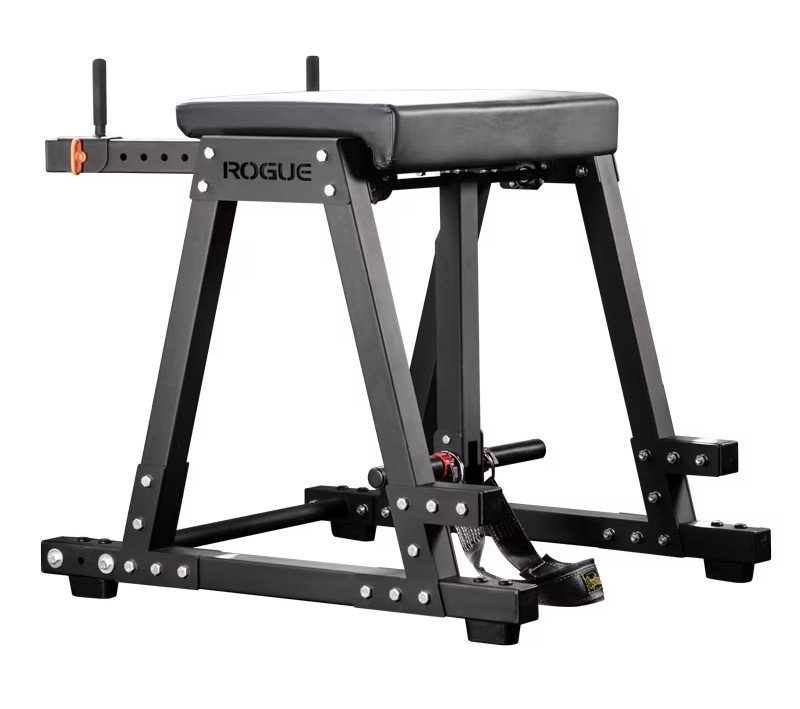
Price: $915.00
🥈2. Titan Fitness H-PND Lower Body Machine
Pros:
- Great value for the price, especially considering its size and functionality.
- Features band pegs and adjustable handles for exercise variation and scalability.
- Solid steel frame provides good stability for heavier loading.
Cons:
- Some buyers report quality control issues like misaligned parts or missing hardware.
- The padding is firmer and less ergonomic than premium models.
- Assembly instructions can be unclear, leading to a frustrating setup process.
🥉3. Westside Scout Hyper
Pros:
- Foldable and lightweight, making it the best portable option for home use or travel.
- Affordable price point without sacrificing core functionality.
- Backed by Louie Simmons and Westside Barbell’s reputation for quality training tools.
Cons:
- Has a lower weight capacity, limiting use for advanced strength athletes.
- Slight instability can occur during higher-intensity sets.
- The folding mechanism introduces some play in the frame, which may affect longevity.
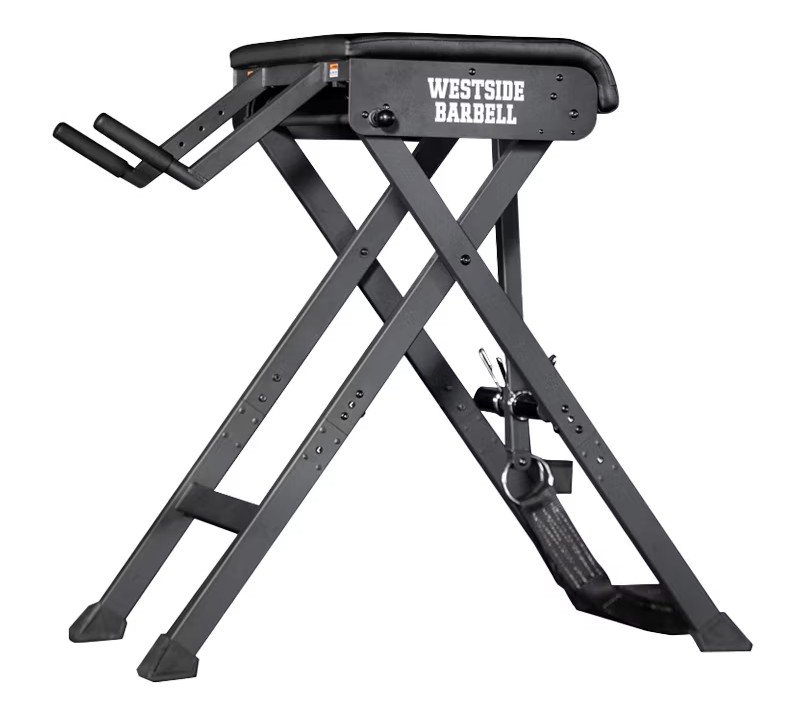
Price: $415.00
🏅4. RH-2 Rogue Reverse Hyper
Pros:
- Built like a tank—extremely sturdy and ideal for commercial gyms or serious strength training.
- Comfortable, high-quality padding supports the hips and spine well.
- Compatible with Rogue’s band pegs for variable resistance training.
Cons:
- Heavier and bulkier than most home gym setups can accommodate.
- More expensive than comparable models from other brands.
- Not designed to be portable or stored easily.
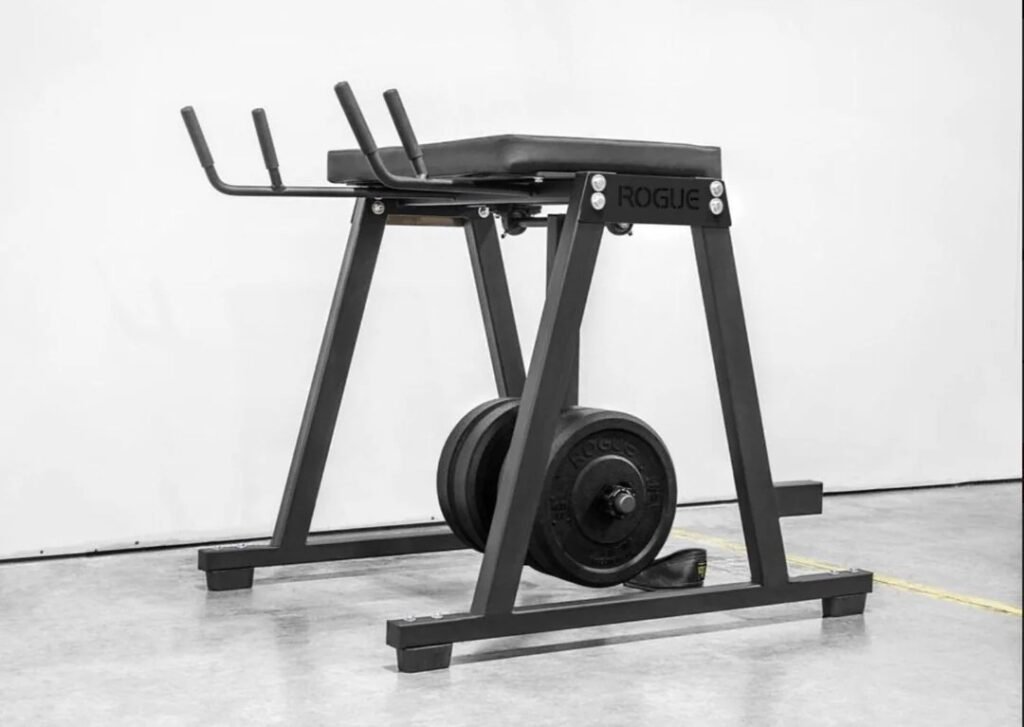
Price: $795.00
🏅5. Titan Glute & Hamstring H-PND Combo
Pros:
- Versatile 2-in-1 design allows for both reverse hypers and glute ham raises.
- Compact enough for most home gyms while still supporting various training goals.
- Offers strong value for multi-functionality compared to buying separate machines.
Cons:
- Transitioning between exercises may require manual adjustments, slowing workout flow.
- Lacks the premium feel or finish of higher-end competitors.
- Customer service and shipping times can be inconsistent based on aggregated customer reviews.
Final Thoughts on addressing back pain & sciatica
In conclusion, back and hip pain, especially when accompanied by sciatica, can be some of the most debilitating and frustrating pain you’ll ever deal with. For me, it was a rollercoaster of flare-ups, partial relief, setbacks, and frustration that stretched over nearly two years. At times, I felt hopeless. The pain would radiate down my leg, disrupt my sleep, limit my mobility, and take a toll on my mood. It felt like it was stealing not only my physical health but also my quality of life. I couldn’t enjoy time with my family, I avoided things I used to love doing, and I constantly worried the pain would never go away.
The reverse hyper machine played a pivotal role in my recovery. It wasn’t a magic fix, but it helped address many of the root issues that caused my sciatica in the first place, weak posterior chain muscles, poor pelvic alignment, and a lack of decompression in my spine. It’s one of the few tools I’ve used that simultaneously strengthens, stretches, and promotes better spinal alignment. That combination is incredibly powerful when you’re trying to heal from chronic pain. However, it’s important to note that it wasn’t the only thing I did. I paired it with core stability work, targeted stretching, mobility drills, and regular walking. No single tool will fix everything, but the reverse hyper has been one of the most impactful pieces in my toolkit.
If you’re considering getting one, I know the price can be a concern. My advice: see if your gym has one or check resale sites for a used unit. If you have the room and can afford it, it’s worth every penny. I used to say I’d pay thousands of dollars if someone could take my pain away, and now, looking back, this machine helped do just that.
The biggest lesson I’ve learned through all of this is that consistency is everything. You can have the best equipment and the perfect plan, but if you’re not consistent, you won’t get results. Commit to the process, whether you have access to a reverse hyper or not. Focus on strengthening, stretching, and alignment every single week. Healing takes time, but if you stay the course, you will get better. I’m living proof of that.

